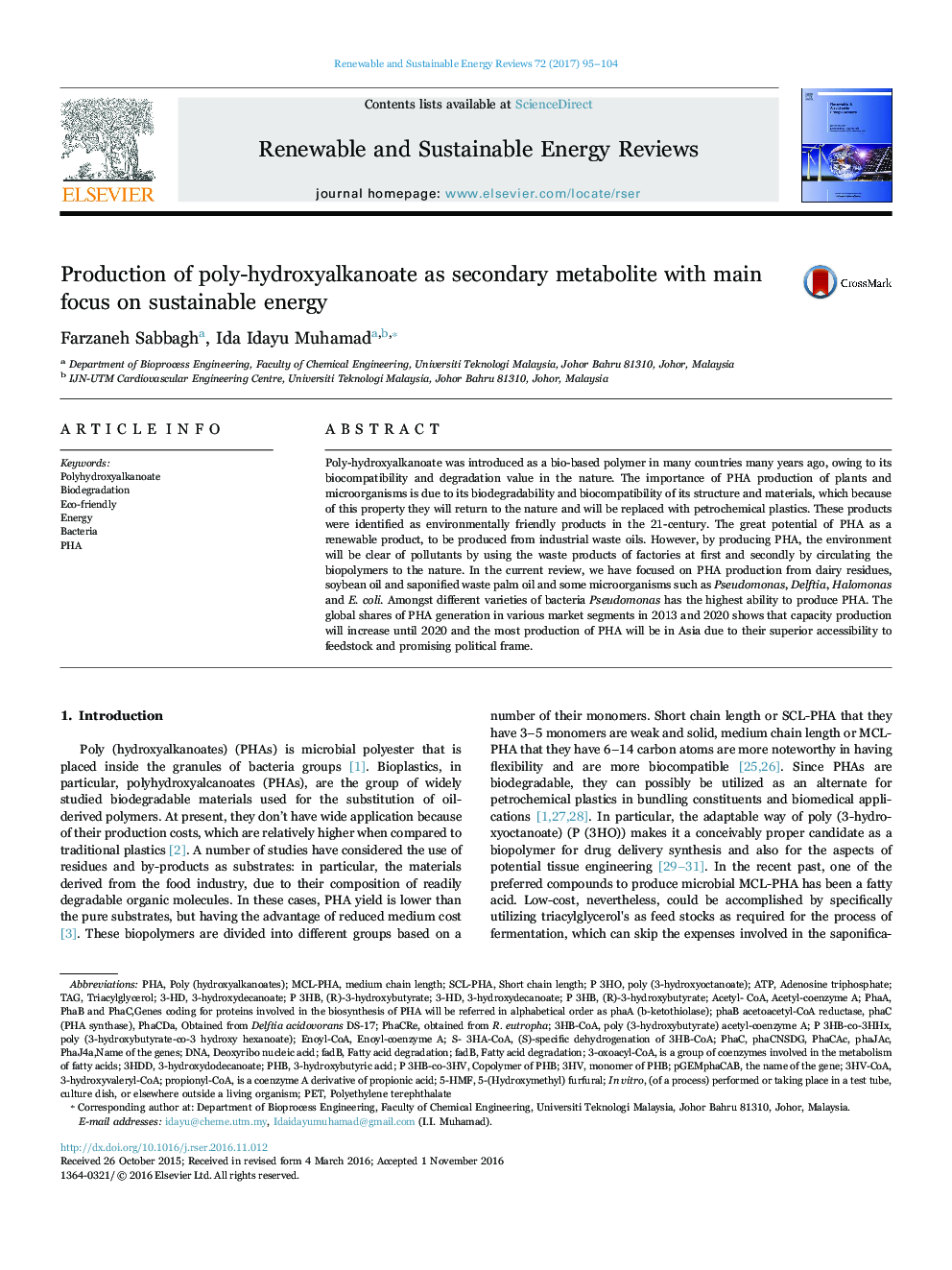| Article ID | Journal | Published Year | Pages | File Type |
|---|---|---|---|---|
| 5482350 | Renewable and Sustainable Energy Reviews | 2017 | 10 Pages |
Abstract
Poly-hydroxyalkanoate was introduced as a bio-based polymer in many countries many years ago, owing to its biocompatibility and degradation value in the nature. The importance of PHA production of plants and microorganisms is due to its biodegradability and biocompatibility of its structure and materials, which because of this property they will return to the nature and will be replaced with petrochemical plastics. These products were identified as environmentally friendly products in the 21-century. The great potential of PHA as a renewable product, to be produced from industrial waste oils. However, by producing PHA, the environment will be clear of pollutants by using the waste products of factories at first and secondly by circulating the biopolymers to the nature. In the current review, we have focused on PHA production from dairy residues, soybean oil and saponified waste palm oil and some microorganisms such as Pseudomonas, Delftia, Halomonas and E. coli. Amongst different varieties of bacteria Pseudomonas has the highest ability to produce PHA. The global shares of PHA generation in various market segments in 2013 and 2020 shows that capacity production will increase until 2020 and the most production of PHA will be in Asia due to their superior accessibility to feedstock and promising political frame.
Related Topics
Physical Sciences and Engineering
Energy
Renewable Energy, Sustainability and the Environment
Authors
Farzaneh Sabbagh, Ida Idayu Muhamad,
